This is the sixth year of the Flyer᾿s annual 20<30 issue, and this year᾿s crop of young movers and shakers is a diverse and impactful group. They are taking on the city᾿s major issues — poverty, food deserts, education, and the lack of young leadership. They are enriching the city — with dance, music, art, crafts, and entrepreneurship.
They are the future, and they have a common denominator: They each want to make Memphis a better place. These young people have studied, practiced, and traveled. Some have moved here from elsewhere; some have returned to a place they᾿re proud to call home, Memphis.
They are faces you᾿ll be seeing and voices you'll be hearing in the coming years. Pay attention. You᾿ll want to know them.
Special thanks to Tommy Peters, Betsy McKay, and the staff of the Cadre Building.
1. Alex Middleton
the bridge builder
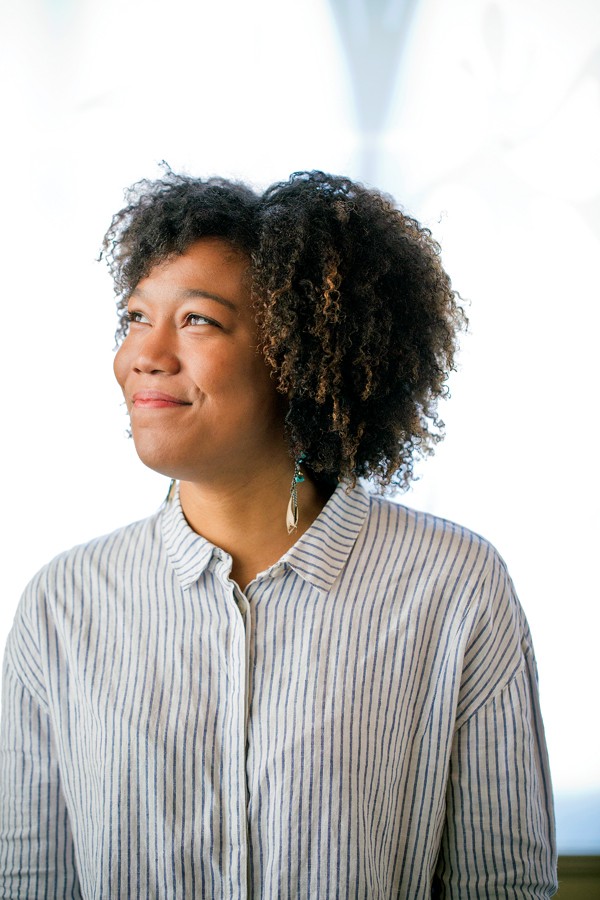 Photos by Justin Fox Burks
Photos by Justin Fox Burks
Memphis has its fair share of problems. The hard-luck issues facing the city are well known and well-documented. But there are those organizations working to turn it all around: places like Bridges USA, which works with youth to bridge the gap between cultures, races, and faiths. And there are people like Alex Middleton, a recruiter for the organization, working to bring the youth to a place of better understanding.
Alex joined Bridges while a junior at the Hutchison School and worked there the summer after graduation. She attended college at Sewanee, studying anthropology and women’s studies. Her plan wasn’t completely formulated, but, she says, “I knew that my passions were definitely social justice, race issues, and gender issues, and just trying to find something that kind of combined those interests and passions of mine.”
She knew, too, that she wanted to work with students, and found her way back to Bridges after college. “I felt like a transplant,” she says about her return. “So I fell in love with the city in a totally different way.”
And now, as a recruiter, she’s working to turn the negative image around and help create stronger leaders. “I don’t really think there’s any other program that’s like it that focuses on so many different issues and really develops the student so holistically,” she says. “There’s the push to become a stronger leader, but also to really understand how to embed yourself and engage yourself within a community of people that you may not know to really help you understand the importance of diversity.”
2. Briana Brown
the ballerina

Briana Brown holds the distinction on this year’s list of being the only person to get up close and personal with First Lady Michelle Obama. The 18-year-old ballerina with New Ballet Ensemble (NBE) visited the White House last November and says, “It was definitely a once-in-a-lifetime experience. Standing in one of the most important places in the United States was something I never would have thought I would be able to do — just being a student of the arts, just being a dance student coming from Memphis.”
But that day she wasn’t “just a dance student.” Briana and NBE Executive Director Katie Smythe were there, along with teachers and students from across the country, to accept the National Arts and Humanities Youth Program Award on behalf of after-school programs.
Briana has been involved with ballet since she was 7 years old and says, “It’s been a really good experience doing performances and taking classes and having rehearsals, and actually having something that, instead of school activity, I do for an extracurricular activity. It’s something I take seriously.”
A senior at Immaculate Conception High School, Briana is looking forward to beginning Christian Brothers University in the fall to study applied psychology with the thought of one day becoming a speech pathologist.
Until then, she’ll keep dancing, of course — almost 25 hours per week. The training keeps her strong and has filled her with confidence. She’ll use those strengths to one day be a teacher of dance, and more. “I would like to become a choreographer,” she says, “traveling to different studios, teaching my own technique of dance.”
3. Iris Mercado
the organizer
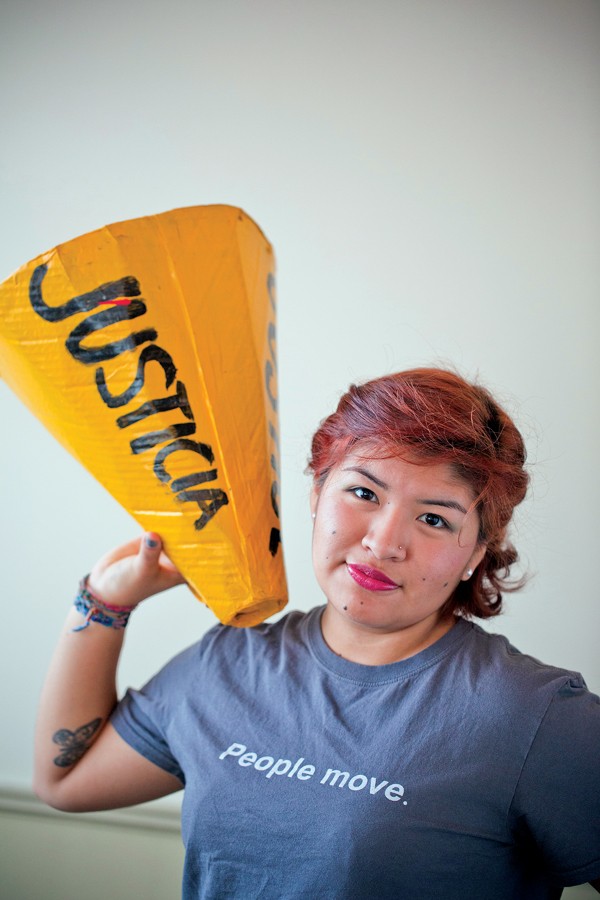
While most kids were sent to camp to paddle a canoe, hike through the woods, and avoid poison ivy, Iris Mercado spent her summers at the Workers Interfaith Network doing clerical work, stuffing envelopes, and mailing letters. Her parents have always embraced activism and fought social injustice, and this apple didn’t fall far from the tree.
Iris was born in Argentina and moved to the United States at the age of 8. She and her family moved around, finally landing in Memphis, where Iris graduated from White Station High School. She attended Bridges USA while in high school and became active in youth organizations.
The senior at Rhodes College worked as the West Tennessee Organizer for the Tennessee Immigrants and Refugees Rights Coalition until last December. Beginning next month, she’ll be working with the Mid-South Peace & Justice Center as an organizer for Memphis United, a coalition of grassroots organizations, community groups, and residents confronting structural and institutional racism.
Going forward, she hopes to stay active with the fight for social justice both locally and nationally. “It’s what I’m most passionate about.”
4. Lance Draper
the entrepreneur
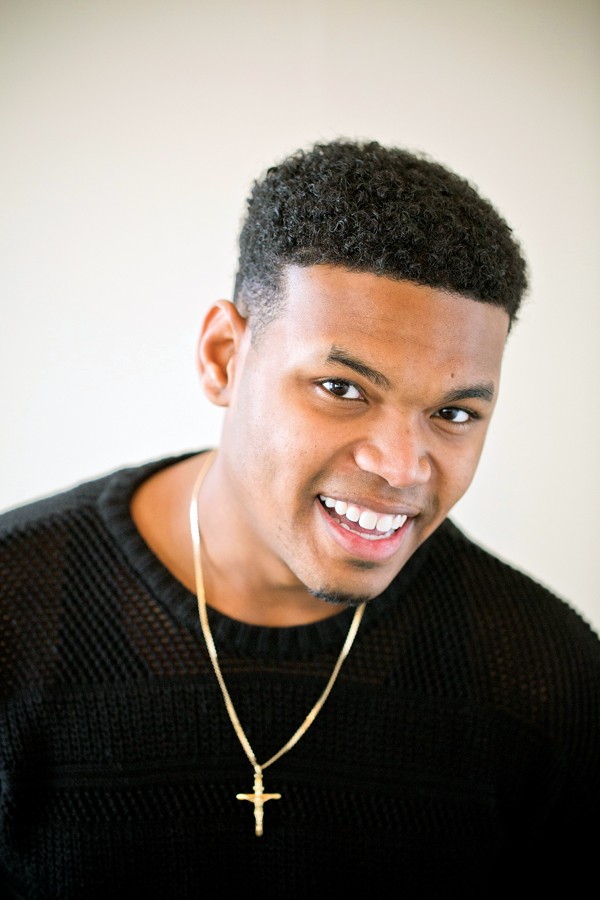
Someone once told Lance Draper, “It’s not how much you make, it’s what you do with it.”
He took that to heart and he’s run with it, buying up houses in foreclosure sales to become somewhat of a mini-land baron. On the face of it, it’s not so impressive. Lots of people buy houses to then rent out. Lance, though, bought that first house with money he’d saved from working as a grocery cashier. And he was 18 years old when he signed the mortgage papers.
Since then, he’s bought six more homes and a 16-unit apartment building in the Greenlaw community of downtown Memphis.
His capitalistic tendencies come from his maternal grandparents, who had a small shopping center with a grocery store, laundromat, and market. His charismatic ways and outgoing nature, his ease with people, are traits he says he picked up from his grandfather, Lafayette Draper, the legendary bartender who was the namesake of the recently reopened venue in Overton Square.
Lance graduated from Mitchell High School and attended the University of Memphis, but a persistent illness kept him from completing his studies. “It just wasn’t meant to be.” He takes his successes at such a young age in stride. “You sacrifice while you’re young and able, and then later on in life you can relax,” he says.
His legacy is one he’s proud of, but this young entrepreneur is looking to make his own way and leave his own mark.
5. Anita Norman
the poet
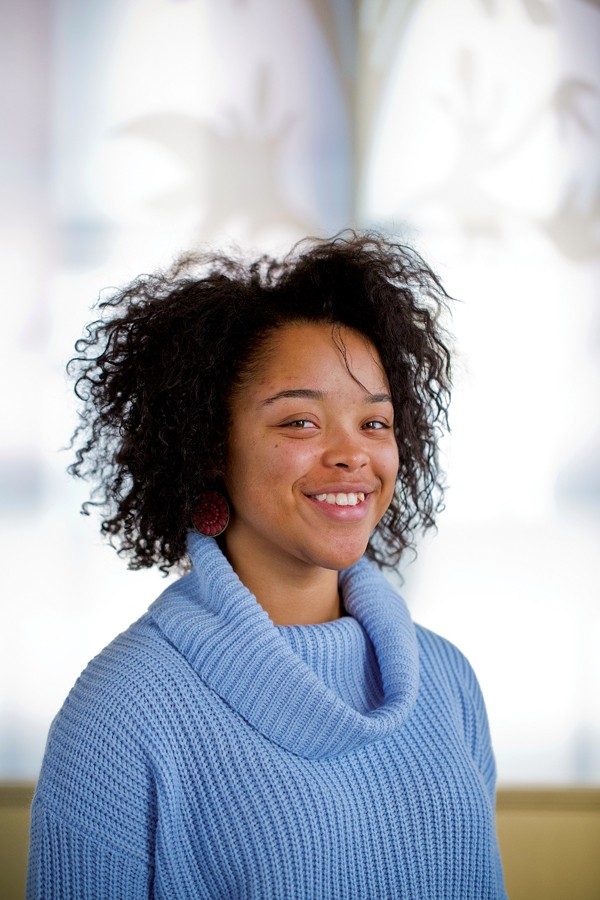
Not many people — even those twice
her age — have the confidence that 18-year-old Anita Norman exudes on stage. “It comes with practice and understanding the power of the words,” she says.
The Arlington High School senior won the Memphis Grizzlies Poetry Slam in February 2014 and, in April, the Poetry Out Loud competition in Washington, D.C., a national event where she took on more than 50 competitors.
The contests, she says, are “not acting and not spoken word, so you have to find this happy medium between really imparting the meaning of the words into your own life experiences — how you bring the two together — but also that you’re speaking to bring it to life and to tell the author’s story.”
Anita came to poetry in general, and spoken word specifically, through her family’s small church in Little Rock, where getting up and contributing was a requirement. She was in middle school and says, “I liked the way that my voice sounded, how you could make the words mean something. … I get into it and I kind of lose myself in the words.”
She moved to Memphis in the 5th grade and later became involved with Bridges USA. After graduation this spring, she’ll be attending Yale.
Anita doesn’t just read other people’s poetry. Her poem “Mama Memphis” was written about her adopted hometown and the way she perceives it.
The acclaim of winning, and the prizes that came with those winnings, are special. But the greatest prize following the Grizzlies competition came later, when Anita’s hero,
Maya Angelou, retweeted a media story written about her.
6. Hillary Clemons
the girl scout
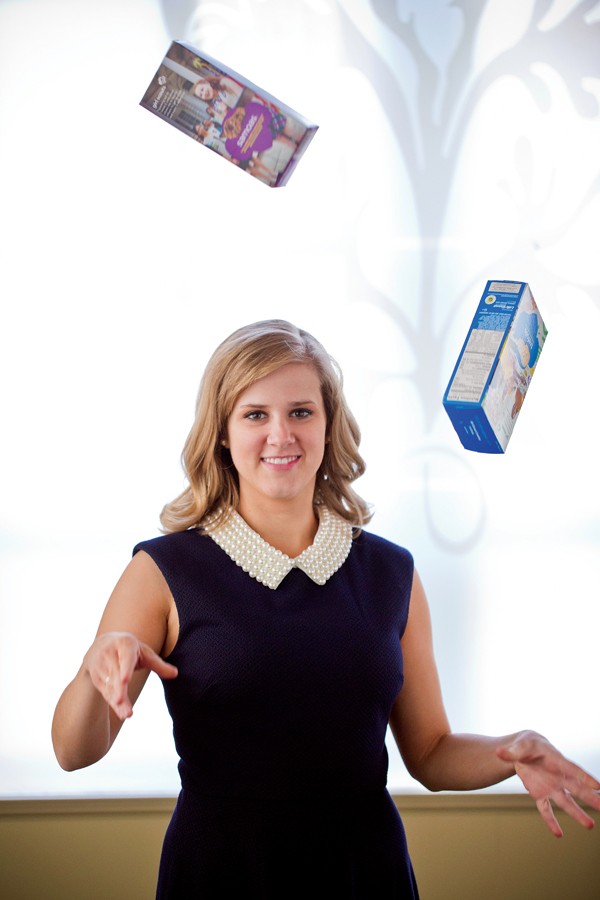
Hillary Clemons learned to be a leader in the Girl Scouts. Now, this Washington, D.C., native is the regional program specialist for Girl Scouts Heart of the South, the local division of an organization that encompasses 59 counties with 9,300 girls and 3,100 adults. She plans educational programs for girls in kindergarten through 12th grade.
This isn’t your mother’s Girl Scouts. “It’s changed,” Clemmons says. “People think it’s all cookies and sewing and crafts, but it’s definitely 21st century now. We have a digital platform to sell cookies, we teach girls computer coding, we have a ‘good credit’ badge for high school girls. We teach entrepreneurship and leadership — and really, whatever a girl wants to do.”
While Girl Scouts do still camp and sell cookies, the value of Scouting these days lies in the girl-led programs, meetings, and trips, in which the Scouts themselves set the course for what they want to achieve.
“It was what attracted me to the organization [Heart of the South],” Hillary says. “I wanted to give back to something that made such a big difference in my life.”
She came to the University of Memphis to study music and, she says, “I fell in love with the city and the university and I just knew this was where I need to be.”
Oh, and her favorite cookies? They’re new this year: the Rah-Rah Raisins.
7. Breezy Lucia
the photographer
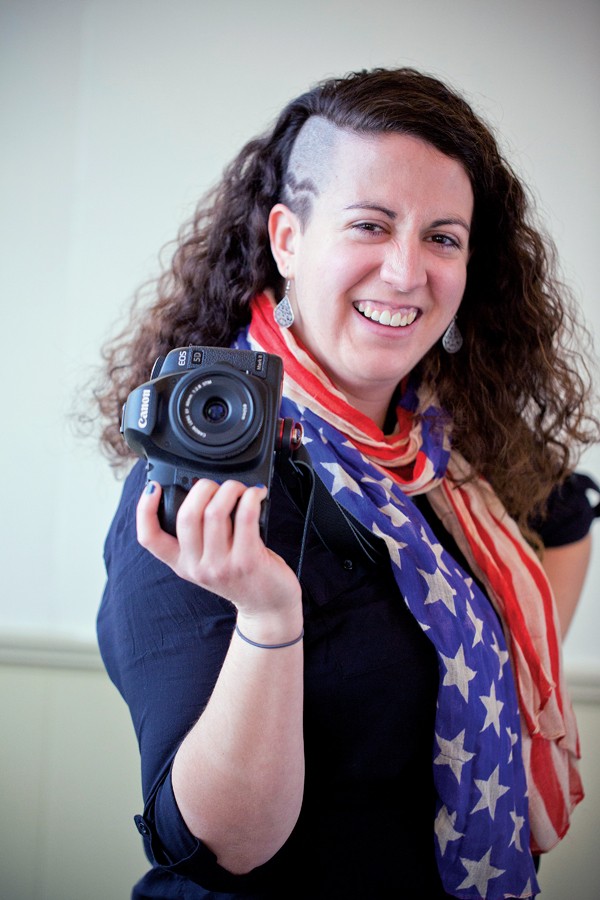
Action!
Breezy Lucia knew she wanted to work in photography from the time she was 13, growing up in Kansas City, Missouri, and got her first camera. “I fell in love with the art, so I did everything I could with it in high school.”
She went on to the University of Missouri and studied photojournalism, eventually transitioning into fine art.
After moving to Memphis to work with the nonprofit Service Over Self, she found her soulmates. “I just really liked the film community in Memphis and I decided to stick around,” she says. “The longer I live in Memphis, the longer I want to live in Memphis.”
Breezy moved from photography to videography and said the transition was a natural one. She has since worked on films such as Melissa Sweazy’s The Department of Signs and Magical Intervention and Morgan Jon Fox’s web series Feral, as well as videos for Alexis Grace and Amy LaVere.
What does she do on set? Whatever it takes. “I wear a bunch of different hats, just kind of helping out in any way I can.”
She works with social media civic booster Choose 901 as a videographer, showcasing the best parts of the city. It’s a collaborative effort, and she enjoys meeting the people she works with and getting to know why they love Memphis.
She has dreams of making her own film and is keeping her eye out for just the right collaborator. And when it comes to moving versus still pictures? “Photography is my first love,” she says. “I’m still a photographer at heart.”
8. Tim Jordan
the middleman

Like many of us, Tim Jordan loves watching basketball. Like most of us, he roots almost exclusively for the hometown Memphis Grizzlies. But like almost none of us, Tim works side by side with the likes of Mike Conley, Tony Allen, and Zach Randolph.
As the senior community investment coordinator for the Grizzlies, Tim acts as a liaison with the players and the community, directing nonprofits to players and vice versa.
“I help players with anything they want to do personally in the community,” he says. “If Zach Randolph wants to give away coats or turkeys, I try to figure out a specific location that works well for him, a community he wants to give back to, and then set it up with a partner organization, school, or community center in that neighborhood.”
Working as the go-between for multi-millionaires and the community they represent is a tall order. Tim and the Grizzlies are setting the bar high among NBA franchises. The Grizzlies organization is a major giver, and arguably the team most engaged in its community in the league.
Like many kids, Tim grew up with dreams of playing for a living. That didn’t pan out, but, as he tells school children on career days, “I may not be playing for the NBA, but I’m still living out my dream. I’m still in the NBA, I still work for the NBA, and I’m making a positive impact on my city at the same time.”
Just like those he works with, Tim is keeping his eye on the ball and his heart in the community. “It’s great to work for this team at a time when we’re winning on the court and winning off the court.”
9. Taylor James
the growler

Taylor James is a leader in the craft beer explosion in Memphis. His growler station in the Cash Saver on Madison Avenue in Midtown was the first of its kind in the area.
“Memphis is a great place for food — everybody loves the food here — and you apply that to beer and it’s kind of the same idea. Craft food, craft beer — it just works.”
The St. Benedict High School graduate left home for the University of Kentucky and returned to work for A.S. Barboro, the local Miller and Coors beer distributor, and then for Budweiser. “I loved it, I love the beer business, but I wanted to work for my dad,” he says.
His father owns the four Cash Saver grocery stores in the area. Taylor started in the dairy department, but, he says, “I kept sticking my nose over in beer.” When he first began suggesting craft beer to management, something was lost in translation. “They didn’t understand why I’d want ‘Kraft’ beer.”
It was on a trip to Virginia and a stop at a brewery that Taylor’s dad first saw a growler. “I could see him get a little excited, and I thought, ‘Okay, that’s cool, that’s all I need.'” He opened his growler station not long after, in December 2013.
Taylor loves nothing more than talking beer and educating his customers on what’s available. He doesn’t want anyone to feel intimidated by the selection and is always learning himself. “You’re talking beer all day long and it’s great when people ask questions. We do our best to let them know everything we know about it.”
He’s at home on Madison, and it’s a family home. “It’s awesome; me and my dad will just sit there firing off ideas at each other all day.”
10. Jerome Hardaway
the veteran
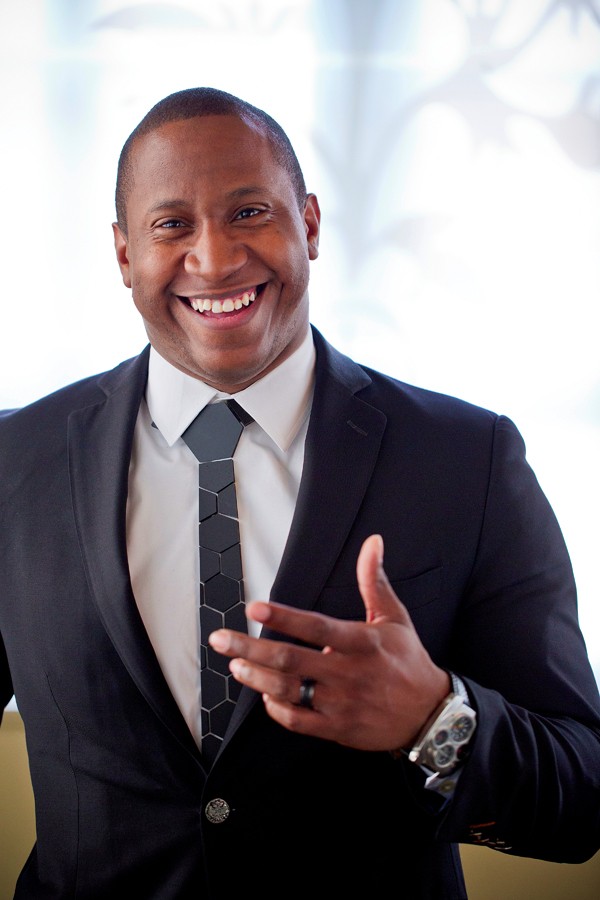
For Jerome Hardaway, serving in the military was somewhat of a birthright. “I come from a long line of people who went into the military,” he says. “I just wanted to do something good for the world.”
As part of the Phoenix Raven Security Forces, he’s been deployed in some of the world’s hottest zones over the past six years, and he’s seen his share of action. But the fight didn’t end once he came home. “From all of the veterans I spoke to, they all had problems within the first two years of their transition [into civilian life]. The biggest problems are non-transferrable skills, which added more stress on them, and poor health care.”
His weapons now are a computer, a telephone, and the charisma and knowledge that enables him to get people to listen. Jerome started the nonprofit FRAGO with partners Adrian Friday and Lex Brown. The group takes a proactive stance, helping to arm veterans with skill sets that can be quickly applied and integrated into their lives — such as coding and web development.
The organization is making waves with veterans and the community from its distinctive home in Central Gardens — Ashlar Hall, better known as the Castle, on Central Avenue.
11. Gil Worth
the podcaster

Gil Worth played in bands for years, at one point playing in five at the same time. Music was his passion. Then he became burned out and let it all go within the span of a few months. “I felt really thrown off the horse, so I stopped listening to music and I only listened to podcasts,” he says. “And that’s when I decided to start one.”
In 2012, he started his own. That podcast led to producing casts for friends. Gil’s wife, Carla, now hosts “901 Paranormal,” and he is on the microphone for the popular “The Game Show” (two guests, two teams, board games, and adult beverages).
Altogether, there are eight in the OAM Audio network (OAM is an acronym for the first letters of his children’s names: Owen, Adia, and Mia), making Gil a media mogul of sorts. Other offerings include “Records, Ruckus, and Wrasslin,” “Black Nerd Power,” and “Dinner and a Newbie.” Special guests have included D.L. Hughley, David Allen Greer, and the Dead Soldiers.
All podcasts are produced by Gil and recordings are guerilla-like, with mobile equipment and shows that have been broadcast from garages, living rooms, the Cooper-Young Festival, and even the basement of Minglewood Hall.
Podcasts have become wildly popular lately, especially with the recent media frenzy surrounding “Serial.” Gil chalks up the popularity to “freedom of content, being able to say whatever you want to say. It’s grown into this thing that’s more than just a conversation, you can make art with it.”
12. Gabriel Fotsing
the facilitator
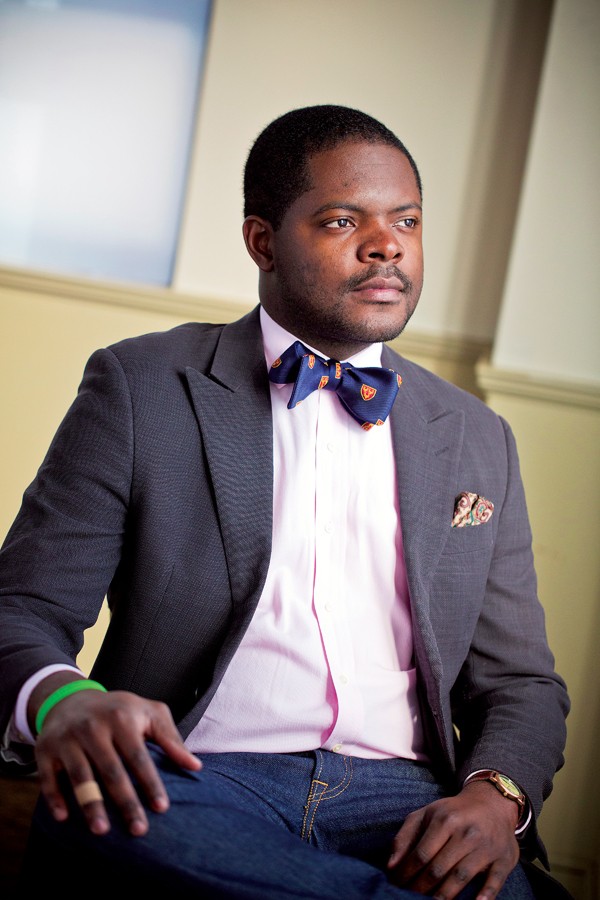
Gabriel Fotsing moved to the United States from Cameroon in 2000. His family settled in Houston then, and that’s where he completed high school. He had one, all-encompassing goal at the time: to go to college. But how? His family didn’t have college money, so Gabriel set out to find some. “I come from a low-income family and knew my parents could not pay for it,” he says. “So my job in high school was to figure out a way to go to college for free.”
He read, he researched, he questioned. And what he came up with was the Harvard Financial Aid Initiative, meaning that since his family was making below a certain amount each year, he could go at no cost. And what he has now to show for it is a Harvard diploma, with a major in economics and a French minor.
He also has his own nonprofit. He started The College Initiative in 2012 to help others like him follow in his footsteps. His organization provides students with the “tools, support, and mentorship to, not only apply to college, but also graduate from college.”
The creation of a nonprofit for Gabriel was a grassroots effort. “I never really knew what the nonprofit world was or how to start one, so I read a book called How to Start a Nonprofit.”
Gabriel is looking ahead, planning to impact 500 kids in the region this year, and later hopes to take the College Initiative to a national level. He also hopes to relax more, with a goal for 2015 of reading “at least 30 books that have nothing to do with my work.”
13. London Lamar
the politician
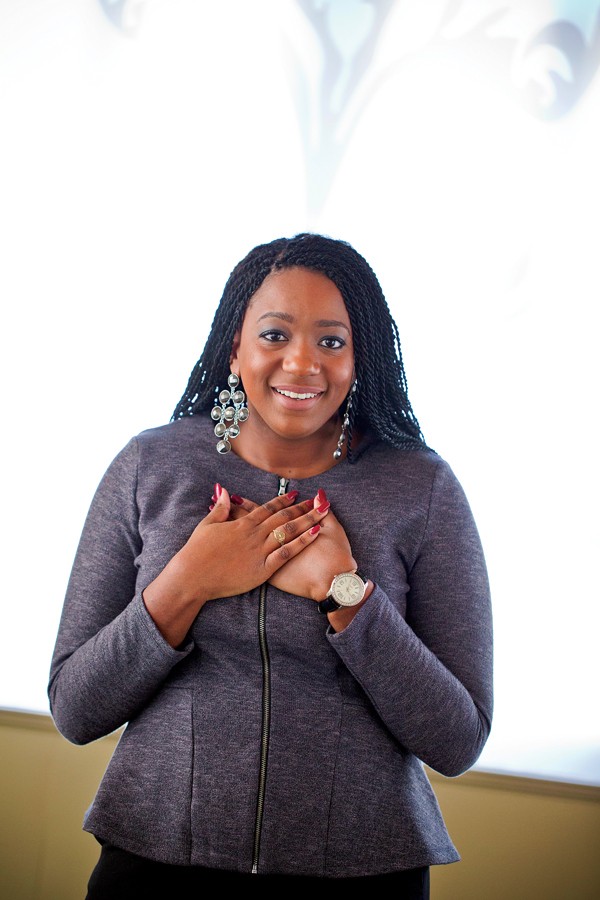
While most people in their 20s might recall watching Nickelodeon or silly sitcoms for hours on end while growing up, London Lamar has memories of watching State of the Union addresses. And she’s always been civically engaged.
“My mother took me with her every election to go vote,” she says. “I knew being politically aware was a part of everyday life. It was just the norm in my family.”
While at Central High School, she was active in class elections and enjoyed history and government civics classes. By the time she got to college — predominantly white, predominantly conservative St. Mary’s College in Notre Dame, Indiana — she could read her calling as easily as a mid-term ballot.
“St. Mary’s allowed me to take it to a different level, I wanted to see an African-American presence among the student body.” She got involved, joined the student diversity board, the African-American club, and started a young Democrats organization.
She brought that boldness back to Memphis. “I saw an open door for young people and myself in politics in this city; I ran through it.”
Last summer, she ran for the Tennessee Democratic Party State Executive Committee, the governing body of the Tennessee Democratic Party. Though she lost, she was the youngest person on the Shelby County ballot and considers it a success that she “made the political scene respect young people.”
Her goal for the future is simple: “I want to be a U.S. Senator by age 50.” She’s had a good start to realizing a goal that began in a voting booth as a child. “This is what I do,” she says. “I eat, breathe, live politics.”
14. Jodie Cherry
the recruiter
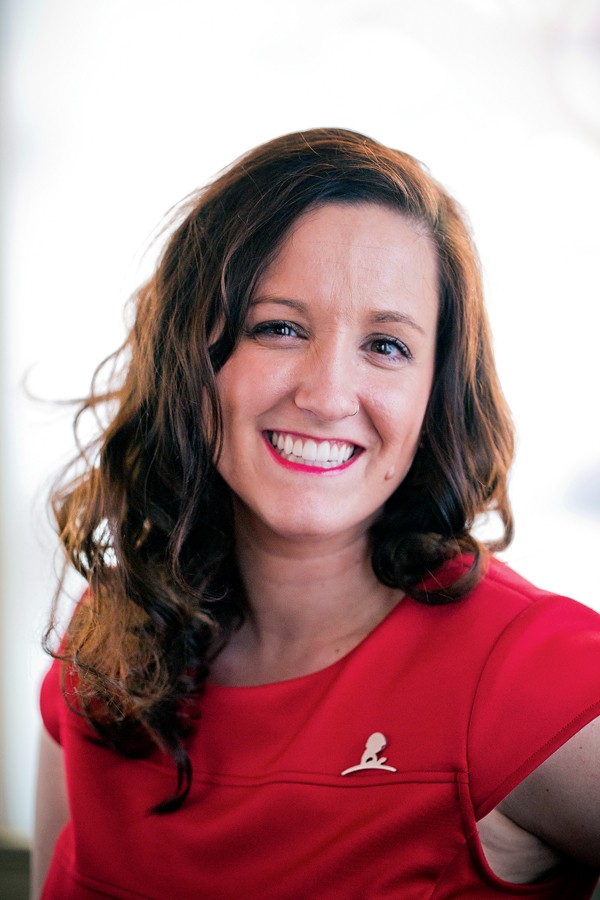
As a talent acquisition specialist in human resources for ALSAC, Jodie Cherry is directly responsible for the recruitment of marketing professionals who will generate $600 million for St. Jude Children’s Research Hospital.
More than simply recruiting them to the hospital, though, Jodie’s job requires her to make those applicants fall in love with Memphis. That’s not such a difficult task for the transplant from Northeast Arkansas. In just two short years, she’s fallen in love with the city herself. “Memphis is a city of opportunity,” she says. “No matter who you are or what you love, there is an opportunity for you here, and it’s really what you make it.”
Jodie came to town to work for the University of Memphis as assistant director of internships. While there, she worked closely with area companies, students, and interns. She’d been on a tour of St. Jude while in college and knew ALSAC would be a great place to work. “I’m a marketing girl,” she says. “It’s a marketing person’s dreamland.”
She talks about the slogan for an upcoming recruitment marketing campaign and says it sums up the way she feels about her work day-in and day-out: “Do what you love, but love why you do it.”
15. Matt Crewse
the director
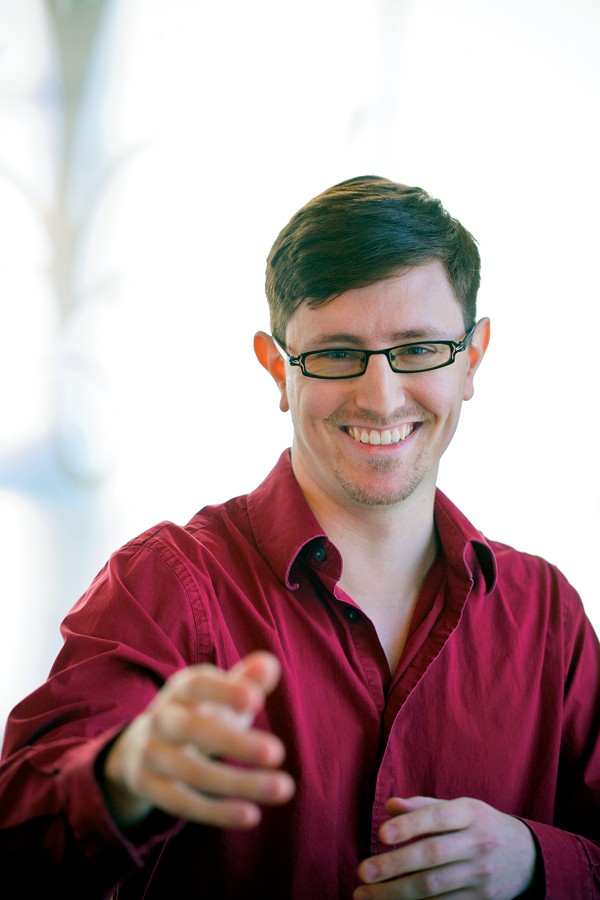
Matt Crewse cofounded a theater company … because of television. After watching the second season of the Canadian TV series Slings & Arrows, set in a fictional Shakespearean festival, Crewse says, “I just really needed to put on a play. So I picked one and I did.”
It was in the middle of that first play that Threepenny Theatre Company was founded, producing classics by Shakespeare and Eugene O’Neill. “We try to do classics and those in the public domain, because it saves on royalties.” Threepenny is a resident company at TheatreWorks in Overton Square.
Where did it all begin for Matt? Act One: High School, interior. “We were reading The Odyssey aloud in class and my English teacher, who also ran the theater department, suggested I try theater, and so I did. I remember getting my first laugh, and it’s all been downhill from there.”
The plays that interest him have been holding audiences captive for centuries — A Midsummer’s Night Dream, Macbeth, and Hamlet.
Since that day at Lexington High School (stage right from Jackson, Tennessee), he’s been aching to see what happens when the curtain rises. He went to the University of Memphis where he studied theater and now works at Mainstage Theatrical Supply on Broad Avenue.
His life is steeped in his art, and, when he’s in the middle of a production, he says, it is nothing for him to be going 100 hours per week. The downside? It doesn’t leave much time to sit in the audience — or to watch any television.
16. Bennett Foster
the advocate

“I spent the first decade of my adult life playing music and organizing a band,” says Bennett Foster. That band was the popular Magic Kids, and Bennett and his mates toured far and wide. With downtime on the road, he read all he could on issues and politics affecting Memphis. And when the road became too tiresome, and his intolerance for the injustices became too much, he says he “couldn’t look away” any longer and decided to get involved.
He now works for the Mid-South Peace & Justice Center as organizing coordinator for the transit justice and neighborhood alliance programs. In 2012, Bennett helped found the Memphis Bus Riders Union, an organization structured as a labor union and made up by those who depend on public transit to ensure they “have a seat at the table” with MATA and elected officials.
Bennett is a lifelong Memphian who didn’t go to school to learn compassion or to earn a sense of social justice. He picked it all up through his own readings and with his own inborn empathy. He’s an autodidact who looks up to his father, local artist and entrepreneur Tommy Foster — a “natural organizer,” Bennett says. “He was never very political but was always kind of making things work DIY-style, and I definitely learned a lot just about using the small resources you have to make something happen.”
17. Matt Ross-Spang
the musician

Matt Ross-Spang is living the dream. The musician has always been a fan of Memphis music — Stax, Hi Records, American, Ardent — and now he spends his days as head recording engineer and producer at Sun Studio. It’s where it all began, on analog reel-to-reel recording equipment, and Ross-Spang has worked long and hard to return it to its glory days. In a feat of reverse engineering, he’s taken out the digital and returned the studio to glorious analog.
“We record just like they did back in the day,” he says. “It was all done with your hands and as a group, all these great session guys playing together at one time without headphones. It wasn’t chopped and edited and copied and pasted.”
He’s worked with some big names: Jerry Lee Lewis, Jakob Dylan, Jim Dickinson, Justin Townes Earle, Mark Ronson, and T-Bone Burnett, to name a few. For the 60th anniversary of Elvis Presley cutting “That’s All Right Mama” — the one that truly started it all — Matt recorded a version of the song with Scotty Moore and Chris Isaak. Four-hundred vinyl pressings were made on the original Sun logo.
But it’s not all the past for Matt. Songwriting in the 21st century is alive and well, and he rattles off names of performers one might see at the Hi-Tone or Buccaneer any night of the week.
Still, there are those producers of the past: Willie Mitchell, Sam Phillips, Chips Moman. “To this day, everything I do is in their shadow,” he says. “I’m always stealing from those guys.”
18. Brit McDaniel
the potter
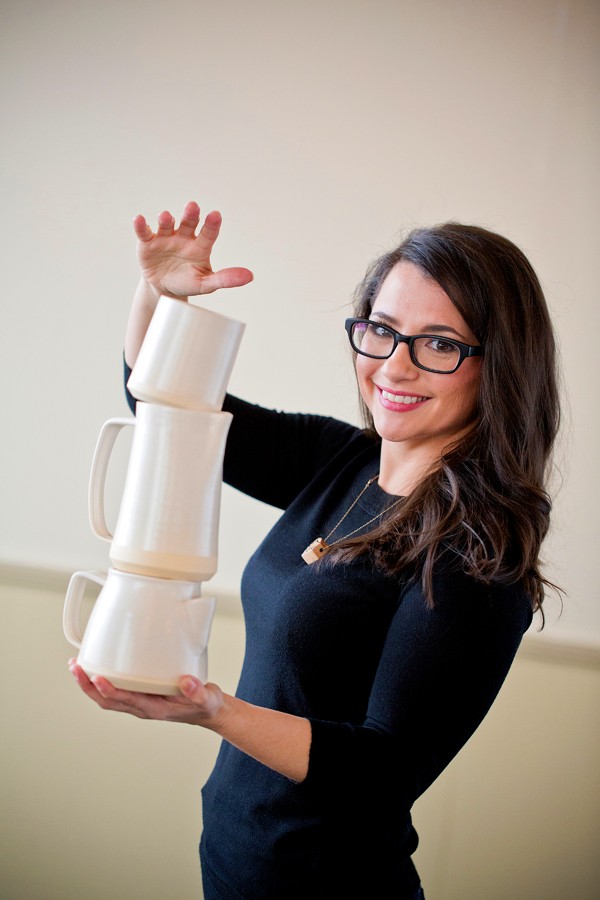
By her own admission, Brit McDaniel didn’t have much direction in her early college days. “I was sort of a late bloomer,” she says. “I didn’t take art in high school until my senior year, and I loved it. But I always just thought it wasn’t very practical and I didn’t have a lot of direction early in my life at all.”
She found her direction after what she calls a “quarter-life crisis” and that direction now might be round and round. She spends hours at her potter’s wheel each day, creating some of the most delicate and beautiful pieces of pottery around.
Or, her direction could be straight ahead, because that’s where her career has gone ever since she found practicality in her art and settled on the craft as a way to make a living. That was in August 2013. She’d known before that, though, that she had no interest in being a starving artist. “I was going to have to think of it as a business.”
It’s paid off. Last year she was featured on the popular blog, Design*Sponge; took part in the Renegade Craft Fair in Chicago; was a finalist in the “Martha Stewart American Made Awards”; and a runner-up in Garden & Gun‘s “Made in the South Awards.” Her wares are also found at Anthropologie.
“Last year really took me by storm,” she says, “so this year I’m trying to be more methodical and say no to things I need to say no to, and keep the focus on the quality of my work and be where I need to be to grow responsibly and sustainably.”
19. Schuyler Dalton
the grower
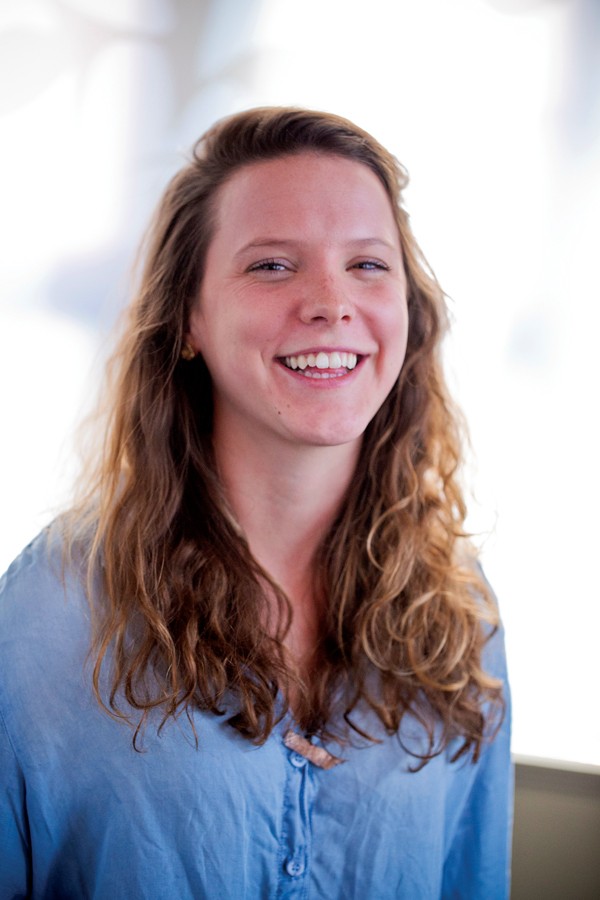
Schuyler Dalton hails from the Northeast. It’s difficult for a Southerner to understand how someone from the frozen tundra might find an interest in agriculture, yet Schuyler did. She hails from Massachusetts, spent a high school semester at a farm school in Maine, and studied sustainable agriculture at college in upstate New York.
She came south on a lark in 2013. “My best friend from college moved down here for Teach for America and had all these cool things to say about it,” she says. “I didn’t have a job and I said, ‘Hey, I could move to Memphis.’ I was looking for an adventure and I love it. I’m so happy here.”
Once here, Schuyler worked with Bridges USA before meeting Mary Phillips Riddle (20<30 class, 2011), founder of Roots Memphis. The match was a perfect one. As the marketing and outreach coordinator for Roots Memphis, Schuyler’s duties include coordinating the community supported agriculture program, recruiting potential farmers for training, and public relations. “I’m kind of a Jill of all trades.”
The farm recently moved to 10 acres at Shelby Farms Park and an integral part of the program now will be to get fresh fruits and vegetables to those in low-income areas, those places on the map known as “food deserts.”
20. Martavius Hampton
the coordinator
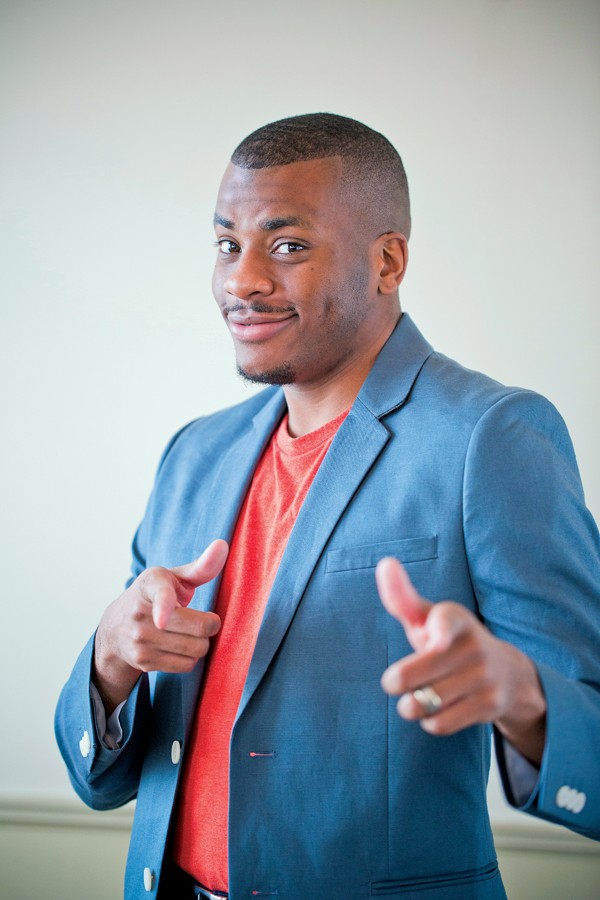
Martavius Hampton came to his work with the Memphis Gay & Lesbian Community Center (MGLCC ) through volunteerism. He began working early with organizations such as Friends for Life. When the opportunity to work at MGLCC came up, he jumped at the chance.
As the HIV program coordinator now, he directs testing, outreach, HIV program research, education, and intervention efforts.
What Memphis needs, he says, is more awareness. “People still have their personal fears for why they won’t get tested, because of stigma or they don’t think they have it or they don’t want to know. But I do think people are doing a better job at getting tested for HIV even within those high-risk communities.”
MGLCC served about 7,000 people last year, but the number of those in greatest need is still growing. Martavius’ goals include more advocacy, education, and research. He has collaborated on two articles for journals looking at the “gay family” structure — families of choice where those in the community, especially gay men of color, might find comfort — and how that structure might affect HIV prevention efforts.
A graduate of the University of Memphis, Martavius is back at the school, working on a graduate degree in public health. His tasks are symbiotic, applying presentations to both, he says, “I do work for school and school for work.”
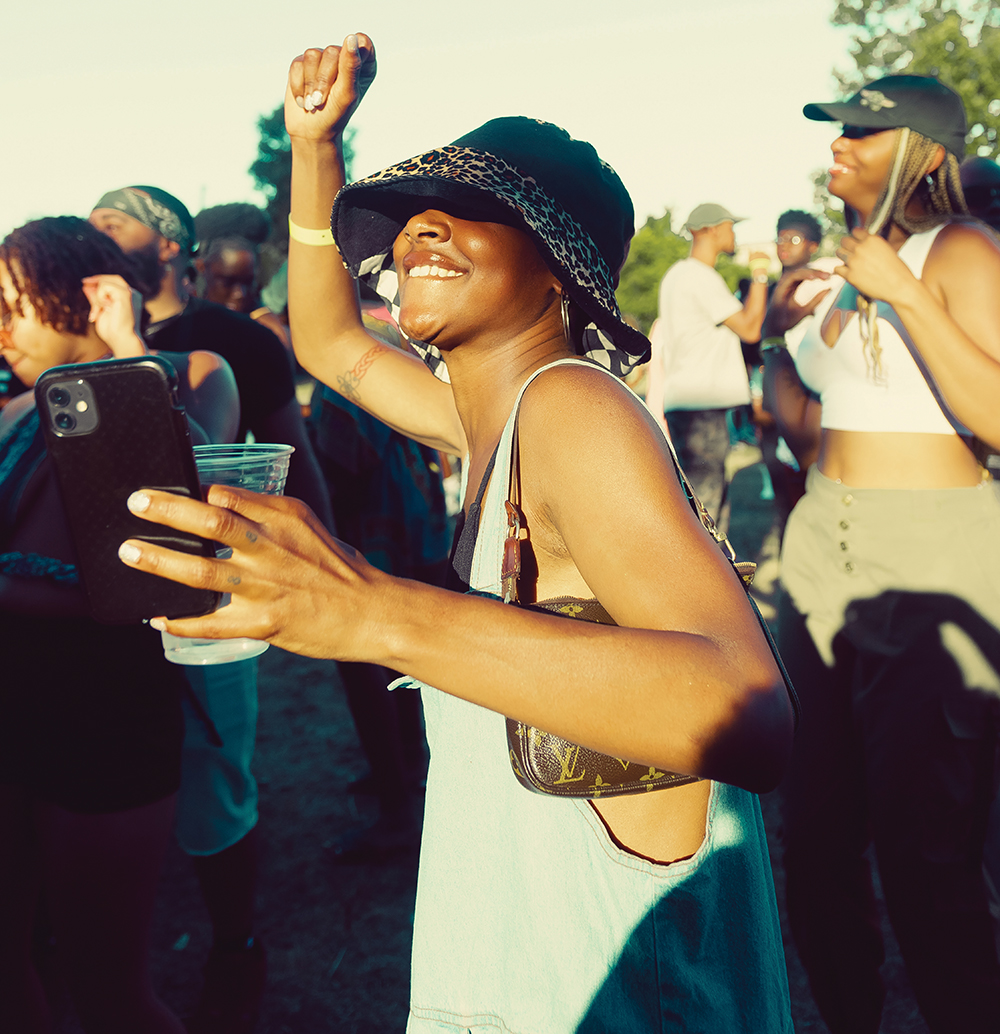

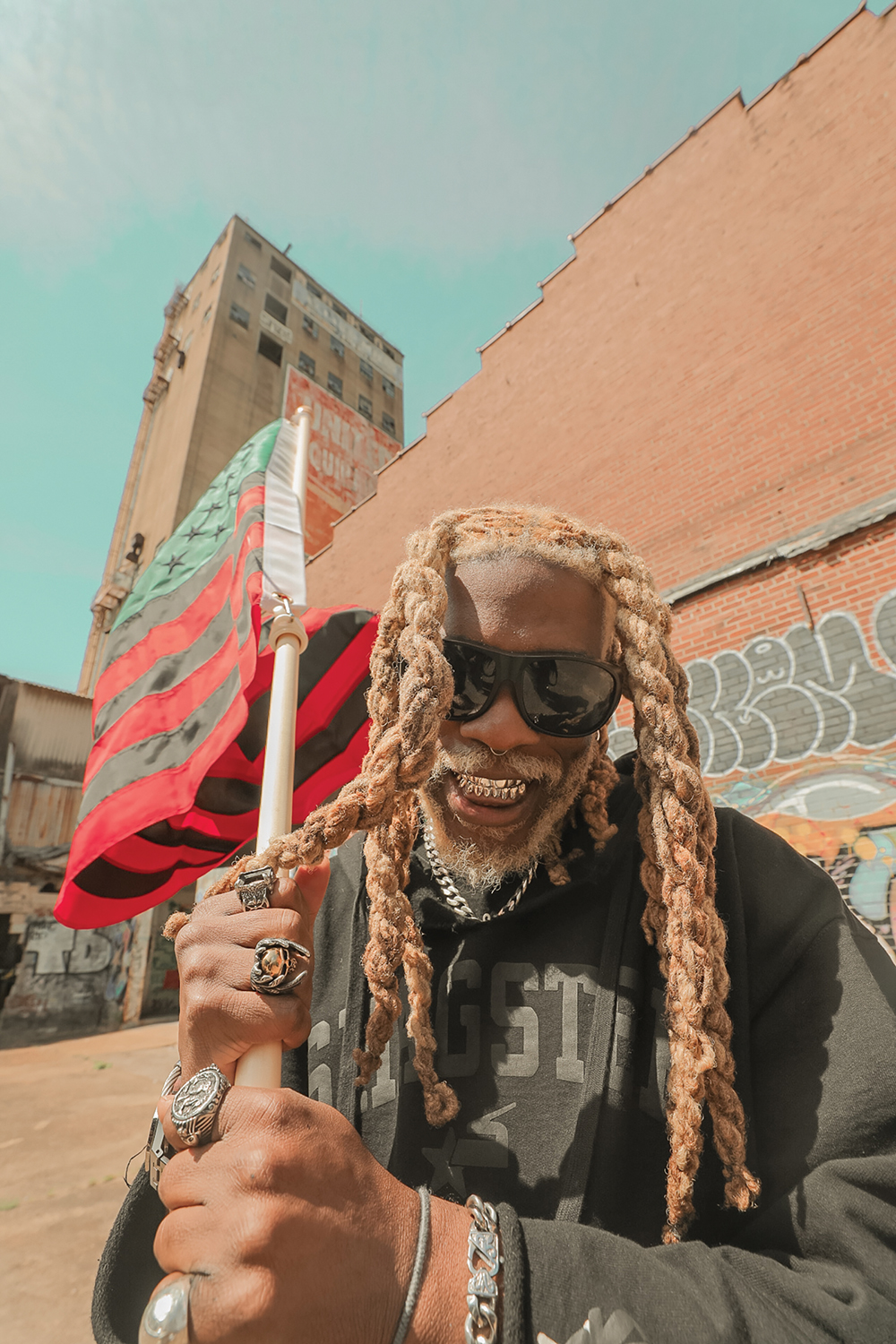

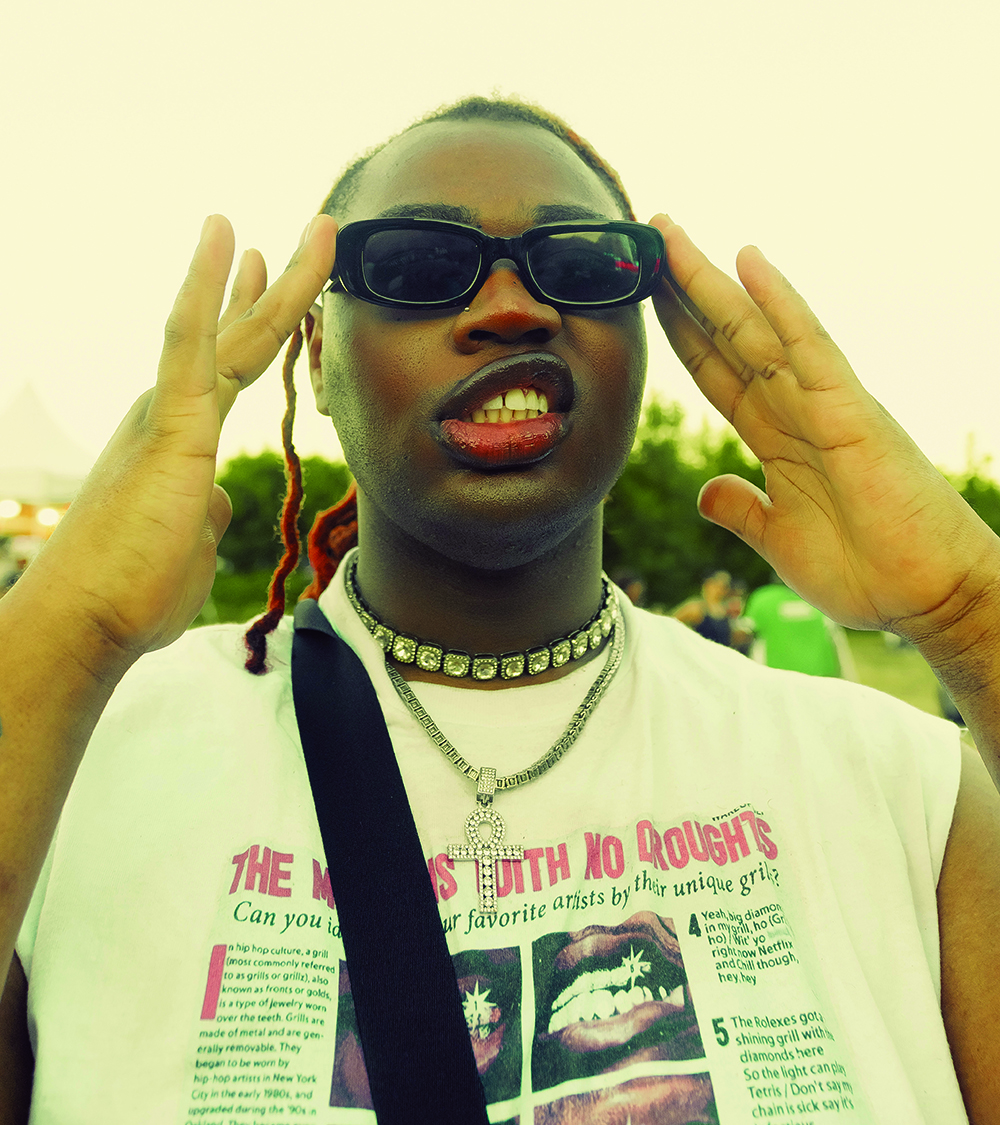
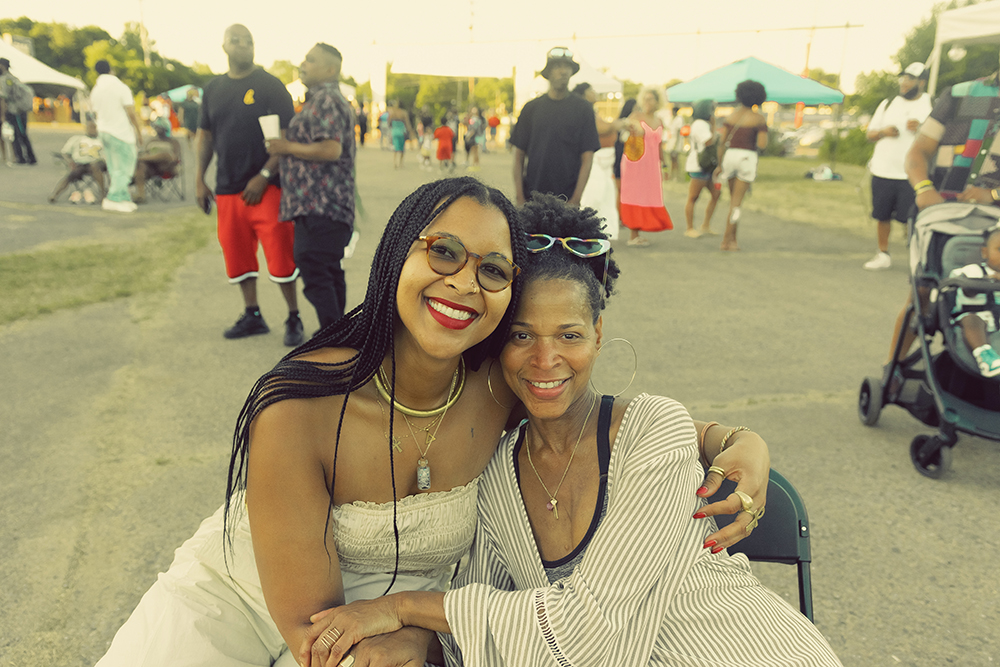
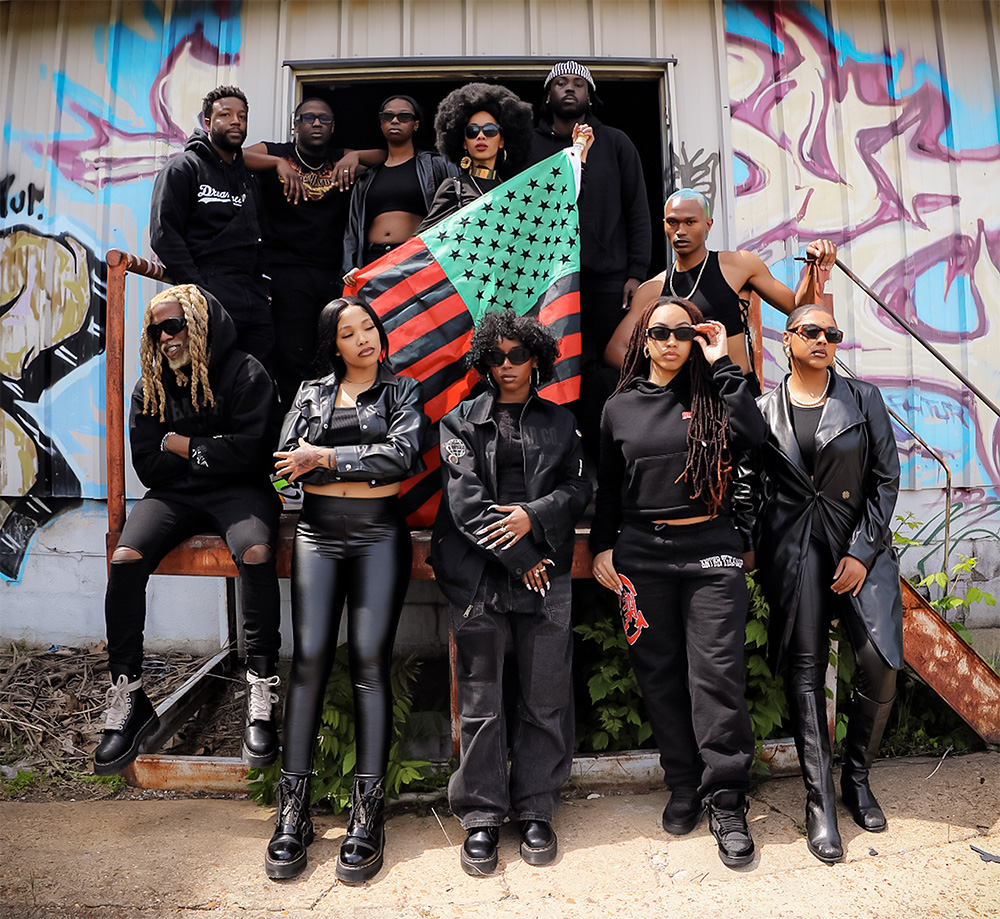
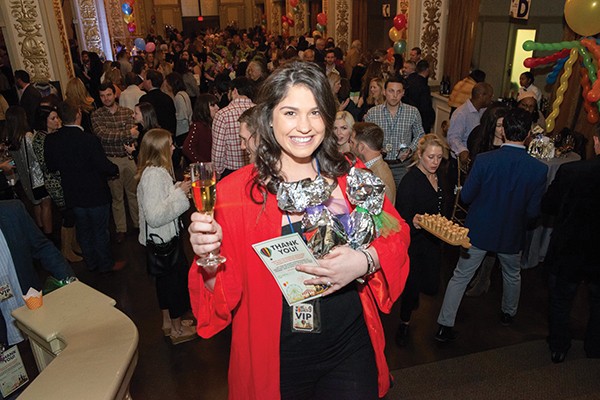 Addie Ray Photography
Addie Ray Photography 

 Photos by Justin Fox Burks
Photos by Justin Fox Burks 

















